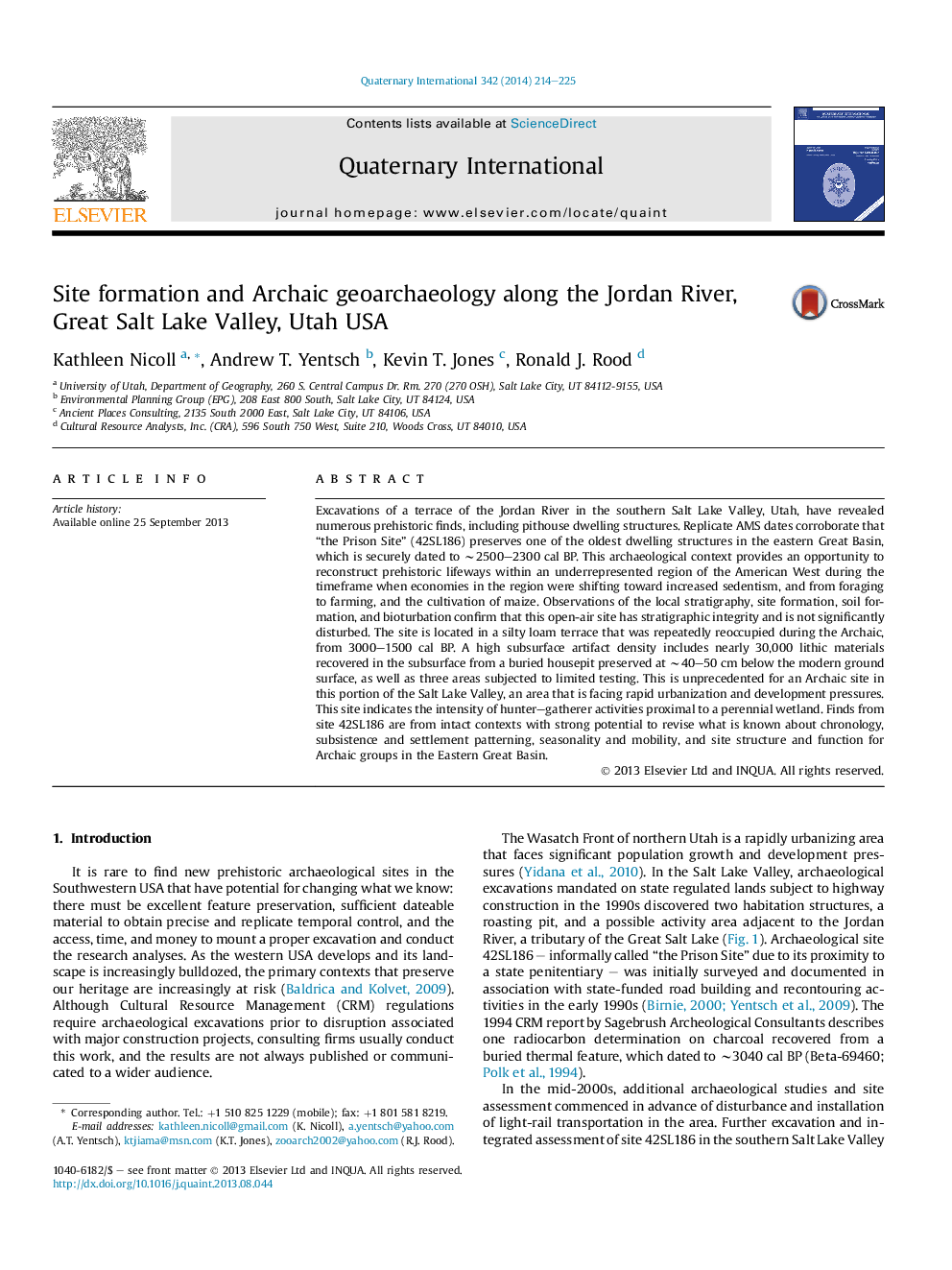| Article ID | Journal | Published Year | Pages | File Type |
|---|---|---|---|---|
| 1041574 | Quaternary International | 2014 | 12 Pages |
Excavations of a terrace of the Jordan River in the southern Salt Lake Valley, Utah, have revealed numerous prehistoric finds, including pithouse dwelling structures. Replicate AMS dates corroborate that “the Prison Site” (42SL186) preserves one of the oldest dwelling structures in the eastern Great Basin, which is securely dated to ∼2500–2300 cal BP. This archaeological context provides an opportunity to reconstruct prehistoric lifeways within an underrepresented region of the American West during the timeframe when economies in the region were shifting toward increased sedentism, and from foraging to farming, and the cultivation of maize. Observations of the local stratigraphy, site formation, soil formation, and bioturbation confirm that this open-air site has stratigraphic integrity and is not significantly disturbed. The site is located in a silty loam terrace that was repeatedly reoccupied during the Archaic, from 3000–1500 cal BP. A high subsurface artifact density includes nearly 30,000 lithic materials recovered in the subsurface from a buried housepit preserved at ∼40–50 cm below the modern ground surface, as well as three areas subjected to limited testing. This is unprecedented for an Archaic site in this portion of the Salt Lake Valley, an area that is facing rapid urbanization and development pressures. This site indicates the intensity of hunter–gatherer activities proximal to a perennial wetland. Finds from site 42SL186 are from intact contexts with strong potential to revise what is known about chronology, subsistence and settlement patterning, seasonality and mobility, and site structure and function for Archaic groups in the Eastern Great Basin.
